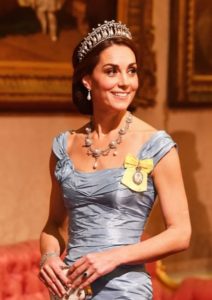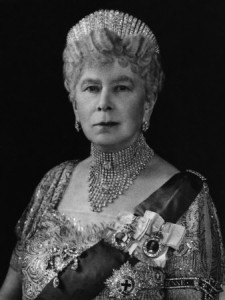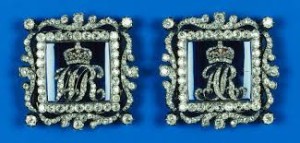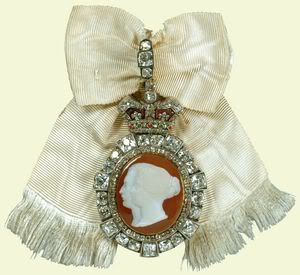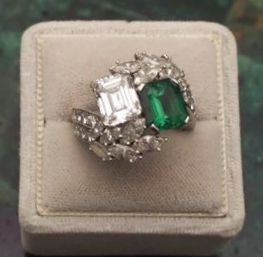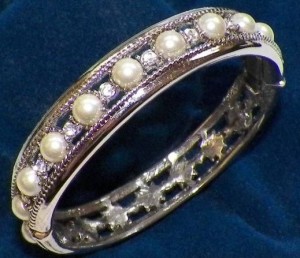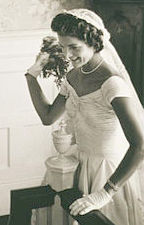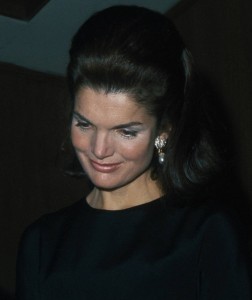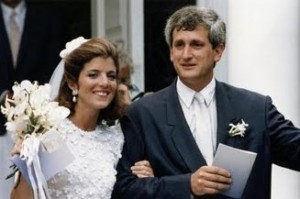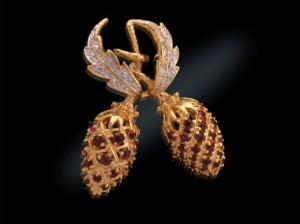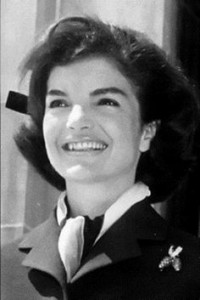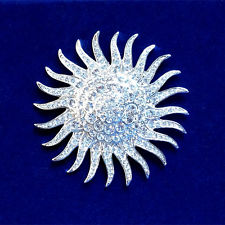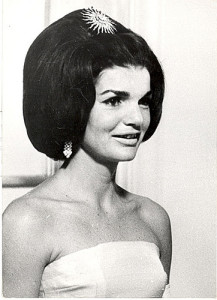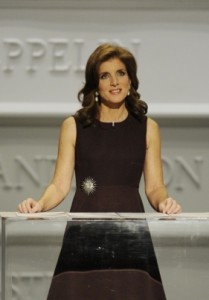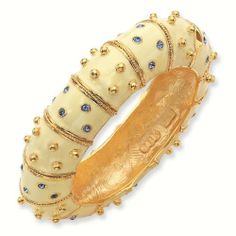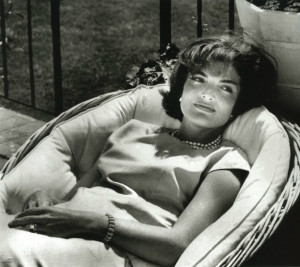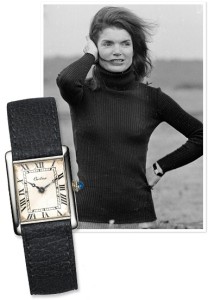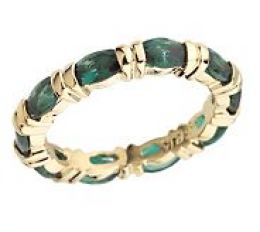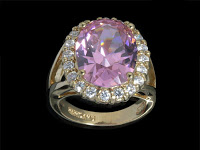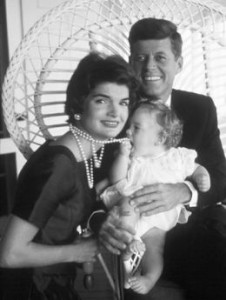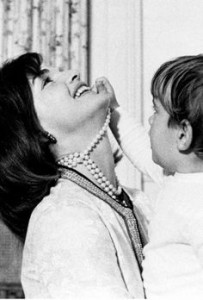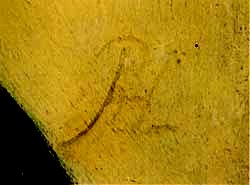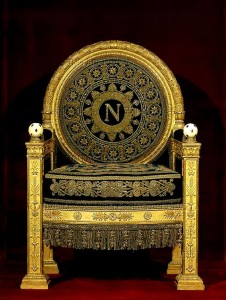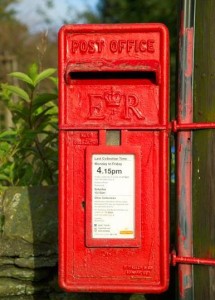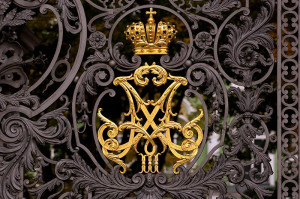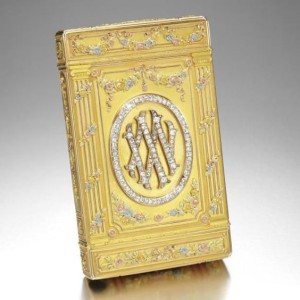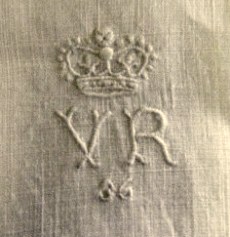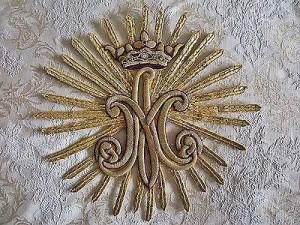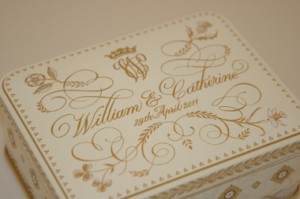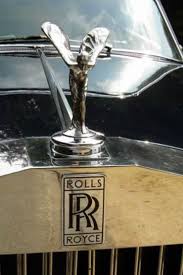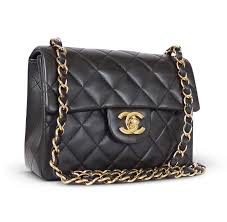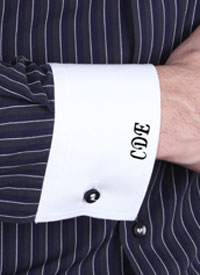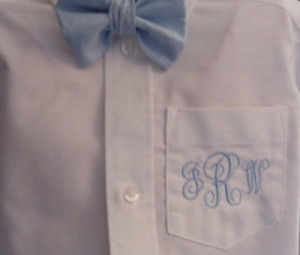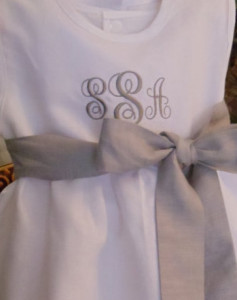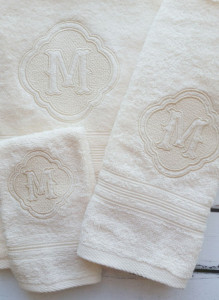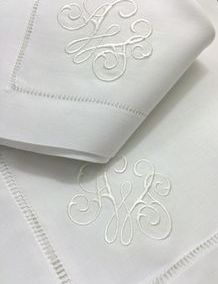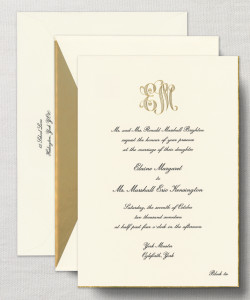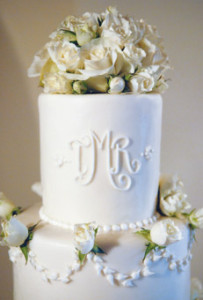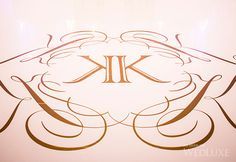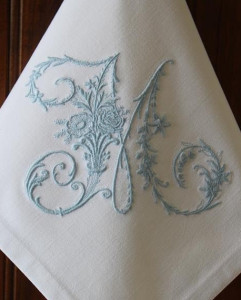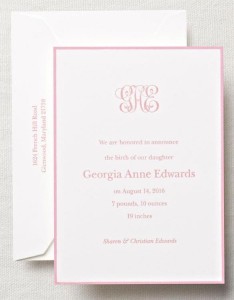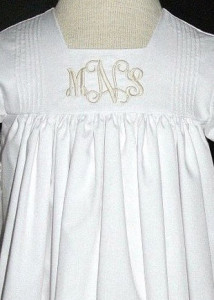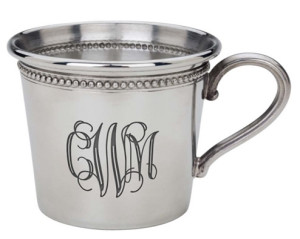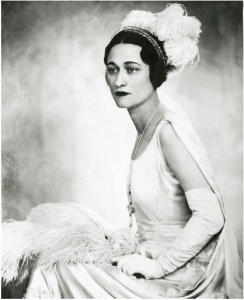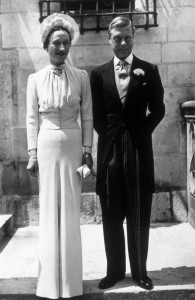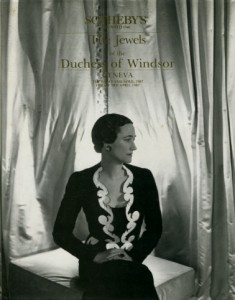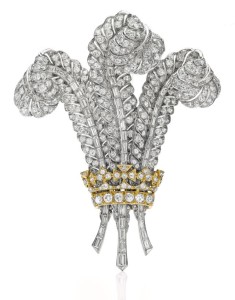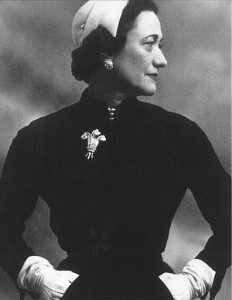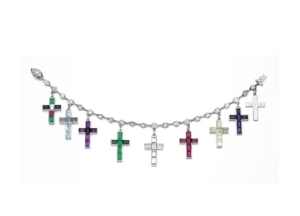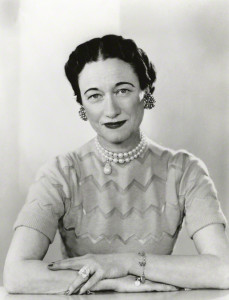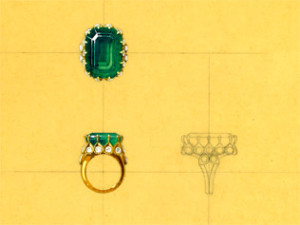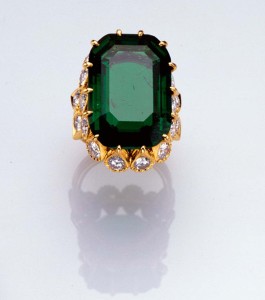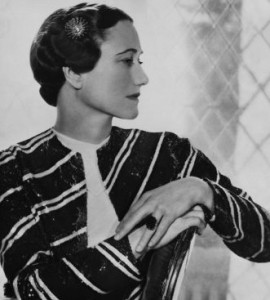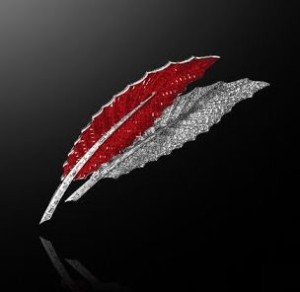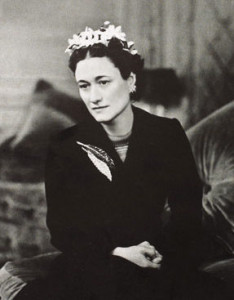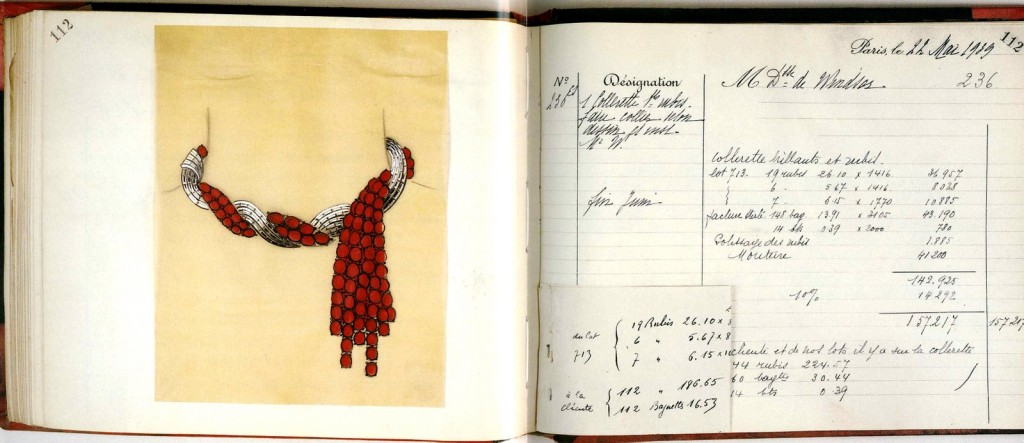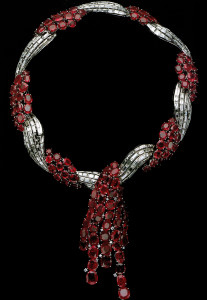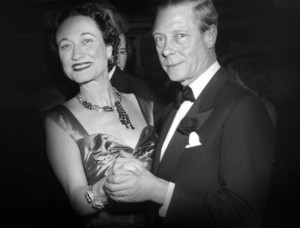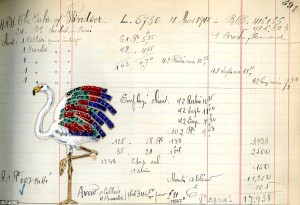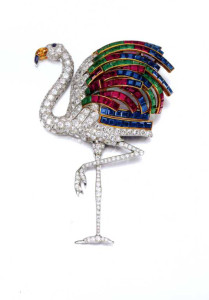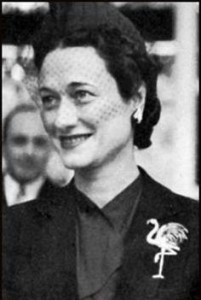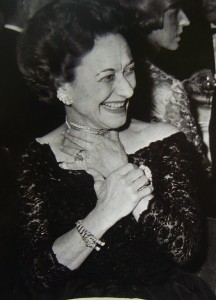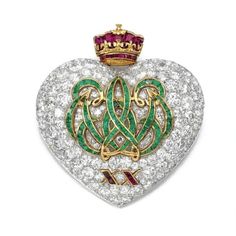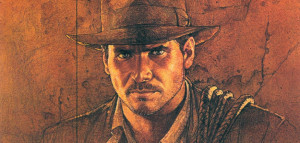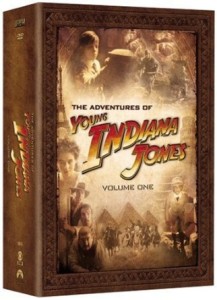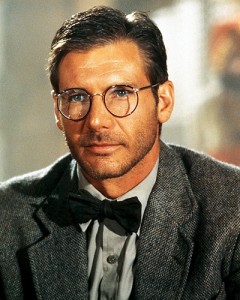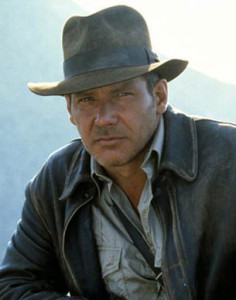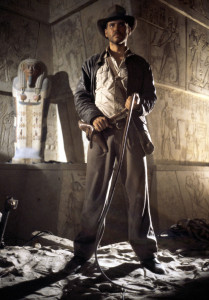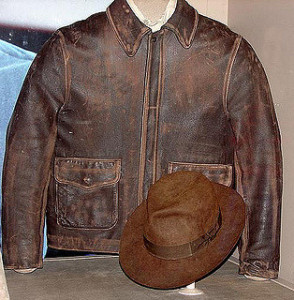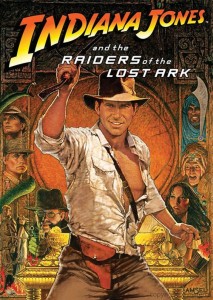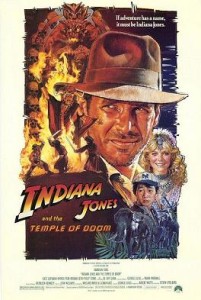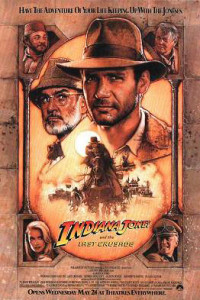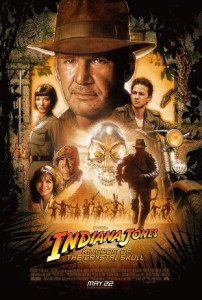While being interested in the British Royal Family over many years I always wondered about the ribbon “badges” worn with miniature portraits pinned to the evening gowns of the female members of the Royal Family. So, I set about researching the history and tradition of the British Royal Family Orders.
The Royal Family Orders are customarily given by the British sovereign to the female members of the Royal Family and are considered a personal item rather than the state commemorative medals worn by the male members of the Royal Family. The Order is decorated with a miniature portrait of the sovereign which is suspended from a ribbon bow and on the reverse side of the portrait frame there is an engraving of the sovereign’s monogram. Throughout the years the color of the ribbon has been changed with each sovereign selecting their own distinctive color.
The Order is customarily worn on the left side of the lady’s evening gown but there has been the occasional exception to this rule. If the lady has received more than one of the Royal Family Orders from various sovereigns the Orders are worn layered with the most recent one on the top. In the photo below on the left shows the Queen Mother wearing the Order of her daughter, Queen Elizabeth II, on the top and the Order of her husband, King George VI, on bottom. The photo on the right shows Queen Elizabeth wearing the Order of her father, King George VI, on the top and the Order of her grandfather, King George V, on the bottom. (Special Note: A female sovereign, such as Queen Elizabeth, does not wear their own Royal Family Order)
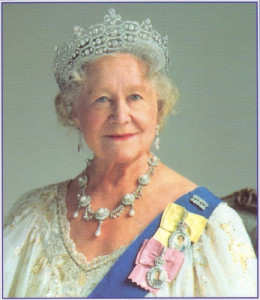
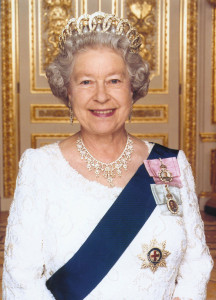
Historical Note: It seems that Queen Mary was one of the most honored women of the Royal Family having receiving five Royal Family Orders. The Orders were given by Queen Victoria, King Edward VII, King George V, King George VI and Queen Elizabeth II. The last Order she received was to her given in December 1952 which was after her grand-daughter, Queen Elizabeth’s accession but before her coronation. Sadly, Queen Mary did not live to see the coronation and died a few months before in March 1953. In the photo below, Queen Mary is seeing wearing two of her Royal Family Orders.
A History of the Royal Family Orders
Listed below are the Royal Family Orders starting with King George IV to the current Queen Elizabeth II. There will be a brief description of each Royal Family Order issued by the sovereign and a partial list of recipients during their reign. (Special Note: There was no Royal Family Order issued for King Edward VIII who abdicated in 1936 less than a year after his accession to the throne and prior to his coronation)
Royal Family Order of King George IV
During Prince George’s regency as the result of the madness of his father King George III, the Prince is noted to on special occasions give his personal badge of honor as a memento to the gentlemen and ladies of the court. After the death of his farther and his accession to the throne as King George IV he reserved the honor of the first official Royal Family Order to be given exclusively to female members of the Royal Family. Attached to a white silk bow was a miniature portrait set in a gold and silver frame decorated with diamond oak leaves and acorns with a diamond embellished crown at the top of the frame (as shown in the photo below, the right photo shows the reverse side of the portrait frame). Some of the recipients of the Royal Family Order of King George IV included his sister Queen Charlotte of Wurttemberg, his sister-in-law Princess Augusta the Duchess of Cambridge and his niece Princess Victoria of Kent who was later to become Queen Victoria.
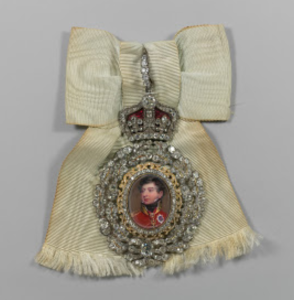
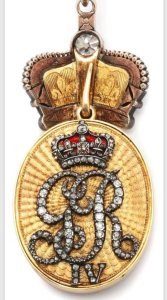
King William IV
During the reign of King William IV he did not create a formal Royal Family Order but instead issued a set of square jeweled buckles featuring the crowned monograms of King William and Queen Adelaide, as shown in the photo below.
Queen Victoria
During Queen Victoria reign, her Royal Badge was initially given as her personal honor to her eldest daughter Princess Victoria on the solemn occasion of her confirmation marking her religious commitment and most notably her status as a young adult. In the following years Queen Victoria bestowed the badges on her other daughters also at the time of their confirmations.
Then after the death of her beloved husband Prince Albert, the Queen decided to formally create the Order of Victoria & Albert as another one of her numerous ways of honoring the Prince. Unlike the other Royal Family Orders, the Order of Victoria & Albert was divided into four classes, the first being given her daughters and later her daughters-in-law and grand-daughters with subsequent classes issued to other members of the Royal Family and the Royal Household including honored servants and couriers.
The Order of Victoria & Albert was established in 1862 and features an ivory colored cameo of Queen Victoria and Prince Albert set in brown onyx with a silver gilt frame accented with diamonds, rubies and emeralds with a diamond embellished crown at the top of the frame which was attached to a white silk bow , as shown in the photo below on the left. Lesser class badges were decorated with pearls instead of diamonds. (Special Note: The second and the third photos below show Queen Victoria’s personal badge with the profiles set in reverse order with Prince Albert in the front and the Queen behind)
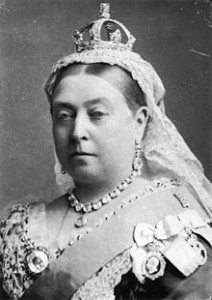
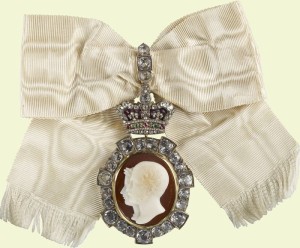
Historical Note: Both Princess Alexandra, Queen Victoria’s daughter-in-law (later to become Queen Alexandra in 1863) and Princess May of Teck (later to become Queen Mary in 1893) wore their Order of Victoria & Albert badges on their wedding days to the future Kings of England.
King Edward VII
The Royal Family Order of King Edward VII was established in 1901 and features a diamond surrounded miniature portrait of King Edward painted on enamel with a diamond embellished crown at the top of the frame, this would set a precedence for future orders which would be created in this style with a single portrait of the sovereign painted on enamel. The King Edward portrait frame is attached to a bow in blue, yellow and red stripes which were coincidentally used as King Edward’s horse racing colors, the order is shown in the photo below. The King’s wife Queen Alexandra, his sisters, daughters and daughter-in-law were recipients of King Edward’s Royal Family Orders.
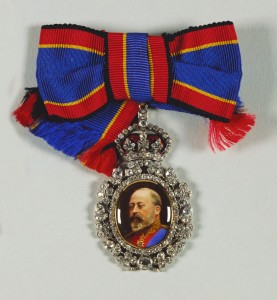
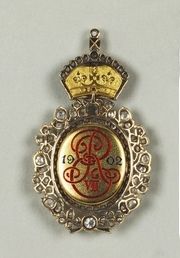
King George V
The Royal Family Order of King George V was established in 1910 and features a miniature portrait of the King painted on enamel surrounded by diamonds with a diamond embellished crown at the top of the frame which is attached to white silk bow. The recipients of the Order include the King’s wife Queen Mary, his daughter-in-law Princess Alice the Duchess of Gloucester and his two grand-daughters, Princess Elizabeth (later to become Queen Elizabeth II) and Princess Margaret.
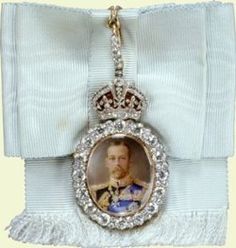
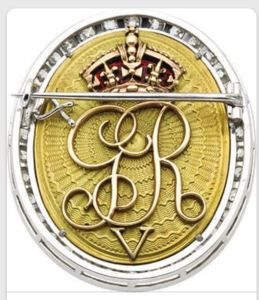
King George VI
The Royal Family Order of King George VI was established in 1936 and features a miniature enameled portrait of the King surrounded by diamonds with a diamond embellished crown at the top of the frame which is attached to a rose pink bow. The recipients of the Order include the King’s wife Queen Elizabeth (later known as the Queen Mother) and their eldest daughter Princess Elizabeth (later to become Queen Elizabeth II) and their youngest daughter Princess Margaret (later known as the Countess of Snowdon).
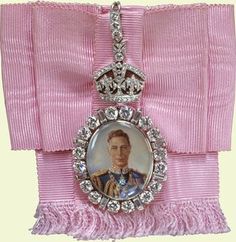
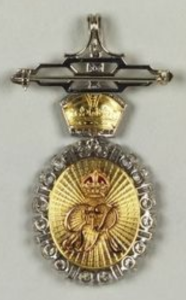
Queen Elizabeth II
The Royal Family Order of Queen Elizabeth II was established in 1952 features a miniature enameled portrait of the young queen surrounded by diamonds with a diamond embellished crown at the top of the frame which is attached to a chartreuse yellow bow. The reverse side of the Order has the Queen Royal cipher and St. Edward’s Crown in gold and enamel.
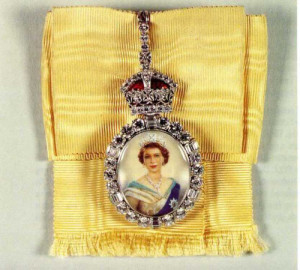
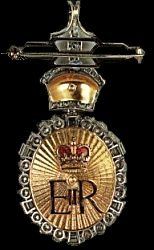
(Special Note: The portrait of Queen Elizabeth used for the Royal Family Order is the 1952 painting by Dorothy Wilding)
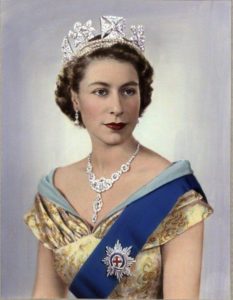
The Queen Elizabeth’s Royal Family Order recipients is the longest list and includes Queen Mary (her grandmother), Queen Elizabeth the Queen Mother, Princess Margaret (her sister) and Princess Diana (her daughter-in-law) who are all deceased. Shown in the photos below are Princess Margaret on the left wearing three of the Royal Family Orders (King George VI, King George VI and Queen Elizabeth) and Princess Diana on the right wearing the Queen’s Order.
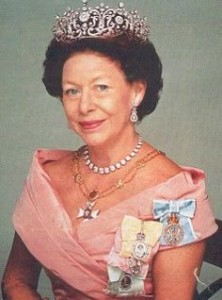
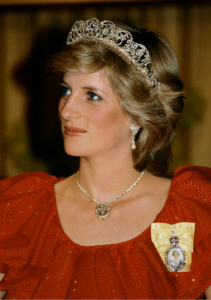
Current recipients include Princess Anne (her daughter) and her daughters-in-law Sophie the Duchess of Wessex and Camilla the Duchess of Cornwall. Three Royals are shown wearing the Order in the photos below.
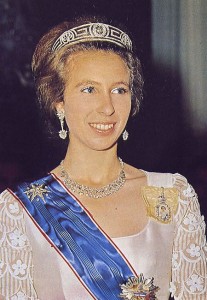
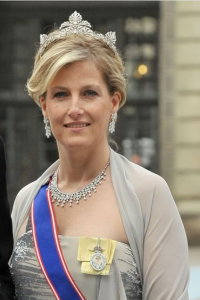
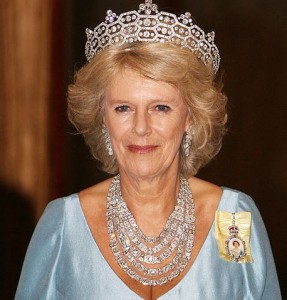
To end this post, there has been long term speculation as to when Katherine, the Duchess of Cambridge, would receive Queen Elizabeth II Royal Family Order. In past years most brides marrying into the Royal Family have received the Order within five years after the wedding, these times are all hearsay since the Order is a personal honor bestowed by the sovereign and there is no official press announcement. The first indication is when the recipient wears the Order at a public function, such as a State Banquet. So far this has not happened for the Duchess of Cambridge and we will continue to wait in anticipation.
UPDATE: The Duchess of Cambridge was reported to have received the Royal Family Order in December 2017 and wore it for the first time at a Diplomatic Corps Reception that year. Shown below is a photo of the Duchess wearing the Royal Family Order in September 2018 at the State Banquet for King Willem-Alexander and Queen Maxima of the Netherlands. It is also interesting to note that the Duchess requested that her Royal Family Order be made of glass instead of ivory because her husband, Prince William, has is a Royal Patron of Tusk which is dedicated to the survival of African endangered wildlife.